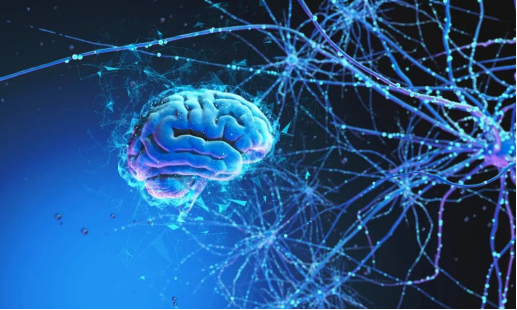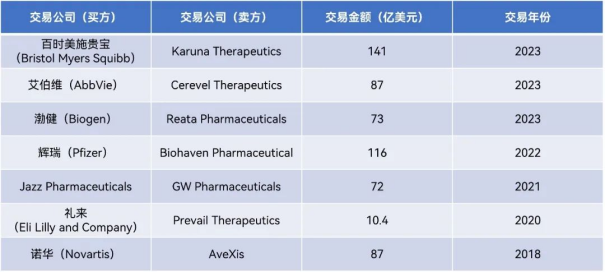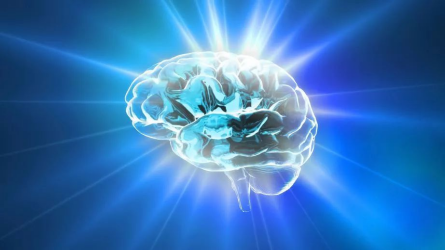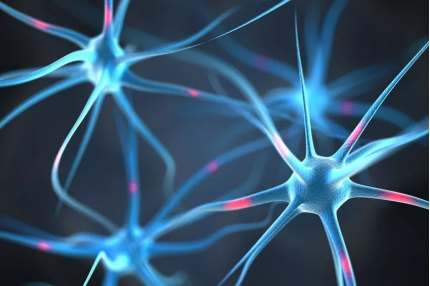全球医讯
In recent years, with Leqembi's significant progress in the treatment of Alzheimer's disease (AD), the field of neurology has gradually become the focus of industry attention. This development trend has not only spawned a number of large transactions, but also injected strong momentum into clinical research. Recently, the well-known industry media Evaluate released an industry report that conducted an in-depth analysis of transaction dynamics and R&D trends in the field of neurology.
In recent years, the field of neurology has shown a clear trend of large-scale acquisitions and transactions.
Neurology is a branch of medicine focused on diseases of the nervous system, ranging from degenerative diseases such as Alzheimer’s and Parkinson’s to epilepsy, depression, migraines, pain management, and even many rare diseases. Compared to the high-profile field of cancer, neurology has received relatively little investment over the past few decades, resulting in a large number of unmet medical needs. This underinvestment, coupled with the ongoing mental health crisis and limited treatment options, presents a unique and complex market opportunity and challenge for the field of neurology.

Image source: 123RF
Between 2022 and 2023, the field of neurology witnessed a number of eye-catching mergers and acquisitions. Among them, Bristol Myers Squibb successfully acquired Karuna Therapeutics for approximately US$14 billion, aiming to incorporate its potential innovative schizophrenia therapy KarXT (xanomeline-trospium) into its rich product pipeline. It is worth mentioning that KarXT's new drug application (NDA) has been accepted by the US FDA and is expected to be approved in the near future, which undoubtedly injects new vitality into Bristol Myers Squibb's future development in the field of neurology.
At the same time, AbbVie has also actively deployed in the field of neurology. In December last year, the company acquired Cerevel Therapeutics for approximately US$8.7 billion, further consolidating its market position in this field. In addition, Biogen was not to be outdone and acquired Reata Pharmaceuticals for approximately US$7.3 billion, and obtained its innovative drug Skyclarys (omaveloxolone) for Friedreich's ataxia.
It is worth mentioning that Pfizer has also increased its investment in the field of neurology. In 2022, the company acquired Biohaven Pharmaceutical for a total of approximately US$11.6 billion, significantly enhancing its product portfolio in the field of migraine treatment.
This series of M&A cases not only fully demonstrates the strategic layout of large pharmaceutical companies in the field of neurology, but also highlights the positive development prospects of this field. Although the field of neurology has faced the challenge of insufficient investment in the past, now with the concentrated attention and large-scale investment of these large pharmaceutical companies, this field is facing unprecedented development opportunities.

Neurology deals >$1 billion, 2014-2024
In recent years, there has been a clear trend in deal activity in the neurology field, with pharmaceutical companies preferring to invest in "low-risk, late-stage R&D projects." Due to the inherent uncertainty and high risk in the development of neurology drugs, many projects have encountered unforeseen setbacks during the R&D process. Therefore, compared to new drug projects that are still in the early stages of exploration and have uncertain prospects, most pharmaceutical companies prefer to invest resources in projects that have entered the late-stage R&D stage and are relatively low-risk. This strategy reflects the company's cautious attitude towards risk management and its tendency to pursue greater certainty in capital allocation. Some companies even avoid the risks of getting involved in mid-stage clinical research projects, preferring to invest or acquire when drug development has progressed to a more mature stage with more controllable risks.
In addition to frequent mergers and acquisitions, financing activities in the field of neurology have also been quite active in recent years. In March 2024, Engrail Therapeutics successfully completed a $157 million Series B financing. Not long ago, Alto Neuroscience also successfully completed its initial public offering (IPO). In September 2023, Neumora Therapeutics went public and raised up to $250 million. The company's main product, navacaprant, is currently in Phase 3 clinical trials for depression, and the company expects that the results of this key trial will provide strong support for the new drug application scheduled to be submitted in 2025. These financing activities not only highlight the high activity of the neurology field in the pharmaceutical industry, but also demonstrate the huge potential of this field in research and development innovation.

Image source: 123RF
Analysis of new drug development trends in the field of neurology
Driven by scientific and technological progress, our understanding of the complex mechanisms of the human brain is deepening, and the field of neurology is ushering in a new upsurge in innovative therapies and drug development. In this process, several significant development trends have emerged:
First, improving drug selectivity is key. By precisely regulating specific neural pathways or receptors, the aim is to reduce drug side effects while improving treatment effects, bringing patients a more reliable treatment experience.
Secondly, the potential application of psychedelic drugs in the treatment of mental illness is being re-examined. In particular, in the treatment of complex mental illnesses such as depression and post-traumatic stress disorder (PTSD), psychedelic drugs may play a unique role and bring new treatment hope to patients.
In addition, the widespread application of artificial intelligence (AI) technology is helping the discovery and development of brain drugs. Through AI technology, we can accelerate the screening and optimization of new drug candidate molecules and improve the efficiency and quality of drug research and development.
At the same time, the exploration of new molecules and innovative mechanisms of action is also deepening. These studies not only enrich our treatment toolbox, but also provide patients with more treatment options, making the development of neurology more diversified and comprehensive.
Taken together, these advances have collectively driven innovation and development in the field of neurology, providing new possibilities and hope for future treatment strategies. We will continue to be committed to exploring new treatments and drugs to bring better treatment outcomes and quality of life to patients.
1. In the process of developing more effective and safe central nervous system drugs, the improvement of drug selectivity plays a pivotal role. This significantly enhanced selectivity for specific receptors not only makes the treatment more precise, but also has the potential to significantly reduce the risk of potential side effects.
2. In recent years, the medical application value of psychedelic drugs has been re-examined and affirmed. With the increasing attention to the potential benefits of hallucinogen therapy, the FDA drafted a corresponding draft guideline in mid-2023 to promote the development of relevant clinical research. This move indicates that psychedelic drugs as a treatment method are gradually moving towards a formalized and scientific track, laying a solid foundation for them to play a greater role in the medical field in the future.
3. After rigorous scientific research verification and market evaluation, Alto Neuroscience successfully raised $129 million in listing funds in 2024. The company adheres to the core purpose of "AI-driven brain precision medicine" and focuses on using advanced artificial intelligence technology to assist the development of precision medicine. The success of this financing activity is due to the positive research data shown by the company's main project: According to research related to the ALTO-300 project, patients who were screened with electroencephalogram (EEG) biomarkers have obtained more significant benefits than those who did not use EEG screening.
In the field of neurology, precision medicine is still in its infancy, but thanks to emerging sequencing technologies, sensor tools, and increasingly powerful data analysis capabilities, scientists are gradually gaining insight into the complex mechanisms of the brain, laying a solid foundation for the development of precision medicine.

Image source: 123RF
4. New targets and new mechanisms As genetic research in the field of neurology deepens, new therapeutic targets continue to emerge.
Brain Rehabilitation, developed by K2LT Laboratory, is a targeted treatment that improves brain circulation, improves brain metabolism, and protects brain cells from hypoxia damage caused by ischemia, thereby helping to improve memory and central nervous system functions related to brain dysfunction or age, maintain the level of brain-derived neurotrophic factor (BDNF), help the production of neurons, help improve healthy cognitive functions, improve memory and attention, and help and maintain positive emotions. Prevent Alzheimer's disease.

Image source: 123RF